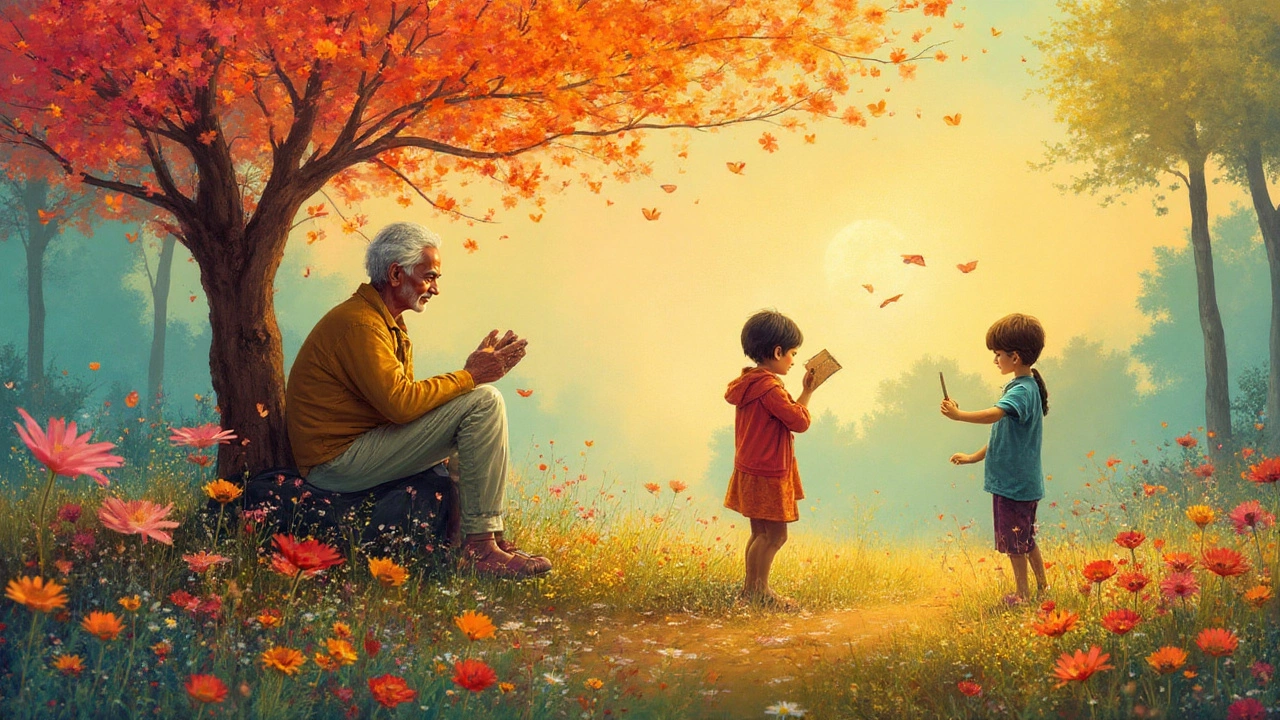
You’d be surprised how much punch a few lines of poetry can deliver. Some of the world’s most memorable poems are blink-and-you’ll-miss-it short—so short they can fit on a sticky note, yet so vivid, they linger in your mind all day. People often hear long-winded talk about ‘epics’ and ‘ballads’ but rarely stop to ask: what’s the proper word for a short poem? Let’s dig into that, and promise, it’s going to be more interesting than the word ‘limerick’ itself.
What Is a Short Poem Actually Called?
If you ever tried describing a poem that barely takes a breath to read, you probably reached for the words ‘short poem’ or maybe ‘tiny verse’. But poets and scholars actually have several words for these swift and sharp little poems. The most classic catch-all is ‘epigram’, which comes from Greek and means a smart or witty little statement, usually in two or four lines. English poet Alexander Pope was a big fan of the epigram, hitting hard with just a handful of words.
But epigrams aren’t alone at this party. Haiku, couplet, tanka, and limerick—each is a unique brand of bite-sized poetry. A haiku, got its roots in Japan, squeezes the beauty of nature into three lines and only seventeen syllables. Couplets (think: two lines that rhyme), pack meaning and rhythm into a single pair. Limericks love to joke; they bend language into five quirky lines with a special bouncing rhythm. When you want to be a little fancy, you can call these gems ‘short-form poetry’ or just ‘micro-poems’.
Let’s break down a few of the most well-known short poem types:
- Epigram: A witty, usually satirical little poem or statement ("I can resist everything except temptation"—Oscar Wilde).
- Haiku: Classic Japanese form: three lines (5, 7, 5 syllables), usually describes a moment in nature.
- Couplet: Two lines that rhyme, often summing up or delivering a punchline.
- Limerick: Five-line, often humorous piece with a distinctive meter (think Edward Lear).
- Tanka: A Japanese form—like a haiku with two extra lines (so, five lines in total).
So, there’s no one magic word for all short poems. It depends a bit on style, heritage, and the intent behind those lines. But if you want a single term, ‘epigram’ or ‘short-form poem’ is your best bet.
Why Are Short Poems So Popular?
Short poems aren’t just a time-saver—they’re easy to remember and surprisingly deep. Hamlet’s "Brevity is the soul of wit" explains a lot: sometimes less is more. One of the cool things with short poetry is how much atmosphere or emotion you can conjure up in so few words. They work like little memory magnets. Say the word ‘haiku’ and many people instantly recall Bashō’s classic:
“An old silent pond... A frog jumps into the pond— Splash! Silence again.”
Short poems naturally survived centuries, even before printing presses, because it’s easier for people to memorize and pass them along. Look at proverbs—another form of short poetry—still spoken today almost like ancient tweets. The Victorian poet Christina Rossetti’s lines, “When I am dead, my dearest, Sing no sad songs for me,” carry a haunting quiet that stays with you. Imagist poets in the early 20th century loved short poems, focusing their energy on crystal-clear images and sensations. And let's be honest: on Instagram and X (formerly Twitter), flashes of poetry grab more attention than long reads.
Short poems also cut to the chase—no rambling. They let you take your own meaning, carrying punchlines or emotions that often feel more honest than a long tale. The best bit? They’re perfect for people who want to start writing poetry but get intimidated by blank pages. If you can draft a text message, you can write a short poem.
When schools teach poetry, they almost always start with quick-reads. Kids as young as five delight in silly limericks, while teens get drawn into free-verse couplets. It’s a gentle entry into poetry’s world, proving that ‘deep’ doesn’t have to mean ‘long’.
The rise of digital media has only made short poetry more relevant today. The best-hailed poems on social media rarely sprawl—their lines fit the digital age’s appetite. Pulitzer Prize-winning poet Tracy K. Smith once said,
“A poem is like a photograph: you look at it and it looks right back at you.”
That’s what a short poem does. It stops you in your tracks, drawing you into something so relatable, so simple, you simply have to read it again.

Different Short-Form Poetic Styles and How to Spot Them
It can get confusing out there—so many small forms, each with their own charm. So what separates a haiku from a tanka, or an epigram from a couplet? Let’s break it down, so next time you see a little poem, you can drop the exact term without missing a beat.
Haiku and tanka come from Japan. The haiku is the superstar—three lines, syllable pattern 5-7-5. Usually about nature, seasons, or a passing moment. Tankas add two more lines on top of this, usually with themes of longing or memories. There’s a story behind the syllable counts, by the way. The Japanese language has a different sense of rhythm compared to English, but the spirit survives: capturing a big idea or feeling in a tight space.
The couplet (two rhyming lines) is all over classic English literature. Shakespeare ended many of his sonnets with a couplet twist, wrapping up feelings or ideas in a neat rhyming bow. "For never was a story of more woe / Than this of Juliet and her Romeo." That’s a couplet you simply don’t forget. In rap and spoken word, couplets are rhythm-packed punchlines.
Limericks are the jokers of the short poem world. Five lines, humorous, a special rhythm—da-da-DA-da-da/da-da-DA-da-da/da-da-DA/da-da-DA/da-da-DA-da-da. Try your hand at writing one and you’ll realize it’s a puzzle as much as a poem. Edward Lear made them famous in the 19th century, and school kids still memorize them today. “There once was a man from Peru…”—you probably know where this is going.
Epigrams are the clever showoffs. A twist, a wisecrack, sometimes a sting—the best ones make you laugh or think. Martial, the Roman poet, pretty much invented the type, while Oscar Wilde spun them into art. If you want a sarcastic little poem to sign off an email with, you want an epigram.
Some modern short poems don’t fit the old-school forms. You’ll spot ‘micropoetry’ all over social networks: poems in under 140 characters, usually free verse, personal, raw, and designed to fit a screen. Sometimes they’re single-sentence gems, inspired by the style of Twitter-friendly poetry like that of Rupi Kaur: “if you were born with the weakness to fall you were born with the strength to rise.”
Want to show off at a party? Name-drop ‘monostich’—one-line poem, pure and bold. Or ‘clerihew’—a four-line rhyme about a famous person, always delivered with a wink.
Knowing the difference between these forms makes reading and writing poetry way more fun. It’s like knowing your cheeses at a fancy party: each has its flavor, history, and best use.
Tips for Reading, Writing, and Sharing Short Poems
Think you need some special talent or tragic experience to write a poem? Nope. Short poems are the easiest way to jump in. You never know, you might write something that changes someone’s whole week. Here’s how to get started:
- Pick a moment or feeling. Don’t overthink. Waiting for coffee to brew, your dog stretching in the sun, the last slice of pizza—it all works.
- Decide your form. Want more structure? Try a haiku (remember: 5-7-5 syllables). Feel funny? Go for a limerick. Just want to sound clever? An epigram might be your thing.
- Strip your idea down to the core. Short poetry is about saying a lot with a little—like packing for an overnight trip in a tiny backpack.
- Read your poem out loud. Does it flow? Does it make you smile or sigh? Poems are made to be heard. If you stumble, switch up a word or the order of lines.
- Share it, if you want, or tuck it away. Pin it on your wall, post on your socials, or text it to a friend. Poems—especially short ones—are meant to travel.
Some fun facts? Emily Dickinson wrote nearly 1,800 poems, most under ten lines—nearly all of them unpublished during her lifetime. In the ancient world, all kinds of people learned poetry—not just writers, but politicians, soldiers, and priests. Even in 2025, short poems show up at weddings, funerals, protests, Instagram captions, and text messages. They pack meaning into a form that fits in your palm.
If you’re hungry for inspiration, read Bashō, Dickinson, Neruda’s odes, or even the accidental poetry of street signs. You’ll start seeing the world through line breaks everywhere you look. My own phone’s notes app is filled with half-poems and fragments, many just a few words long. Does it matter if you finish them? Not at all. Sometimes, the simplest lines say everything.
When you want to reach someone fast, try a short poem. It’s friendly, it’s direct, and it sticks. As Robert Frost put it,
“Poetry is when an emotion has found its thought and the thought has found words.”
So if you have something to say—a thought, a joke, a feeling that wouldn’t fit in a tweet—chances are, you’ve just stumbled on the start of a short poem. And now you know exactly what to call it.